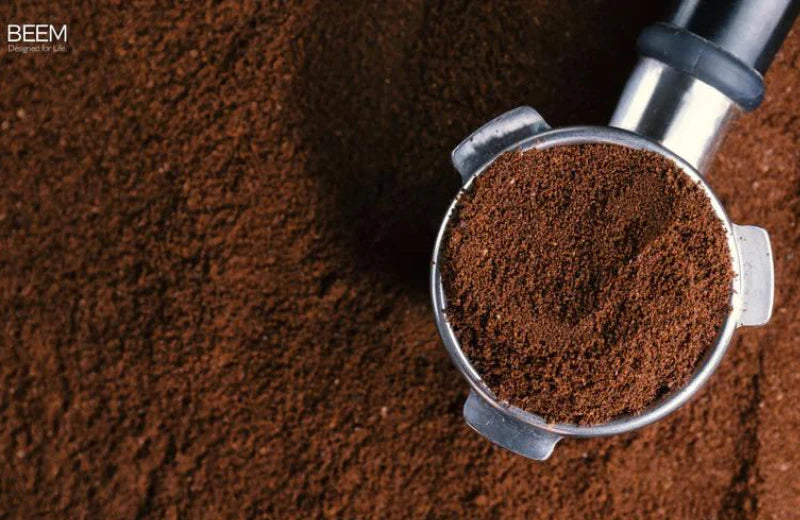The Future of Upcycled Food Waste: The Rise of Reusing Spent Coffee Grounds
As the world grapples with increasing environmental concerns and the urgent need for sustainable practices, upcycling food waste has emerged as a promising trend. Among the various types of food waste, spent coffee grounds stand out due to their versatile applications and potential benefits. This blog explores the future trend of upcycling food waste, with a special focus on the innovative ways spent coffee grounds are being reused.
The Growing Problem of Food Waste
Food waste is a significant global issue, with millions of tons discarded annually. This not only represents a waste of resources but also contributes to greenhouse gas emissions. To address this, the concept of upcycling food waste—transforming by-products and leftovers into new, valuable products—is gaining momentum.
Why Focus on Spent Coffee Grounds?
Every day, millions of people worldwide enjoy their cup of coffee, generating an enormous amount of spent coffee grounds. Traditionally, these grounds end up in landfills, contributing to environmental pollution. However, spent coffee grounds are rich in nutrients and possess unique properties that make them ideal candidates for upcycling.
Nutrient-Rich Composition
Spent coffee grounds are rich in nitrogen, phosphorus, and potassium, making them a valuable resource for various applications, particularly in agriculture and gardening.
Unique Physical Properties
The abrasive texture of spent coffee grounds makes them suitable for use in cosmetic products and as natural cleaning agents.
Innovative Applications of Spent Coffee Grounds
- Agriculture and Gardening
One of the most common uses of spent coffee grounds is as a natural fertilizer. Their high nutrient content helps improve soil health, promote plant growth, and deter pests. Additionally, spent coffee grounds can be used in composting, enhancing the decomposition process and enriching compost quality.
- Biodegradable Products
Innovators are exploring the use of spent coffee grounds in creating biodegradable products. For example, some companies are developing eco-friendly coffee cups and packaging materials made from spent coffee grounds, reducing reliance on plastic and contributing to a circular economy.
- Cosmetics and Personal Care
The beauty industry is tapping into the potential of spent coffee grounds. Their exfoliating properties make them an excellent ingredient in scrubs and skincare products. Moreover, coffee grounds contain antioxidants that benefit the skin, making them a sought-after component in natural beauty products.
- Energy Production
Spent coffee grounds can also be transformed into biofuels. Researchers are developing methods to convert these grounds into biodiesel, providing a renewable energy source and reducing waste.
- Food and Beverages
Surprisingly, spent coffee grounds are finding their way back into the food industry. They can be used as an ingredient in recipes, adding a unique flavor and nutritional boost to various dishes and drinks. Grounds For Good (https://groundsforgood.co.uk/collections/gin-bar) are renowned for their array of upcycled food & drink products. Companies are also experimenting with incorporating coffee grounds into snacks and energy bars, appealing to eco-conscious consumers.
The Future of Upcycling Spent Coffee Grounds
The future of upcycling spent coffee grounds looks promising, driven by increasing consumer awareness and demand for sustainable products. Here are some trends and developments to watch:
- Technological Advancements
Advances in technology will play a crucial role in enhancing the efficiency and scalability of upcycling processes. Improved methods for extracting valuable compounds from spent coffee grounds and developing new applications will drive innovation in this field.
- Collaborative Efforts
Collaboration between coffee producers, businesses, and researchers will be essential in creating a sustainable ecosystem for upcycling spent coffee grounds. Partnerships can facilitate knowledge sharing, resource optimization, and the development of market-ready products.
- Consumer Awareness and Demand
As consumers become more environmentally conscious, the demand for upcycled products is expected to rise. Brands that prioritize sustainability and transparency in their practices will likely gain a competitive edge, encouraging further growth in the upcycled food waste sector.
- Regulatory Support
Government policies and regulations supporting sustainable practices and waste reduction will play a pivotal role in promoting the upcycling of spent coffee grounds. Incentives for businesses adopting eco-friendly practices and stricter regulations on waste management can drive the industry forward.
Conclusion
The upcycling of food waste, particularly spent coffee grounds, represents a significant step towards a more sustainable future. By transforming what was once considered waste into valuable resources, we can reduce environmental impact, conserve resources, and create innovative products. As technology advances and consumer awareness grows, the potential for upcycling spent coffee grounds will only continue to expand, paving the way for a greener, more sustainable world.

